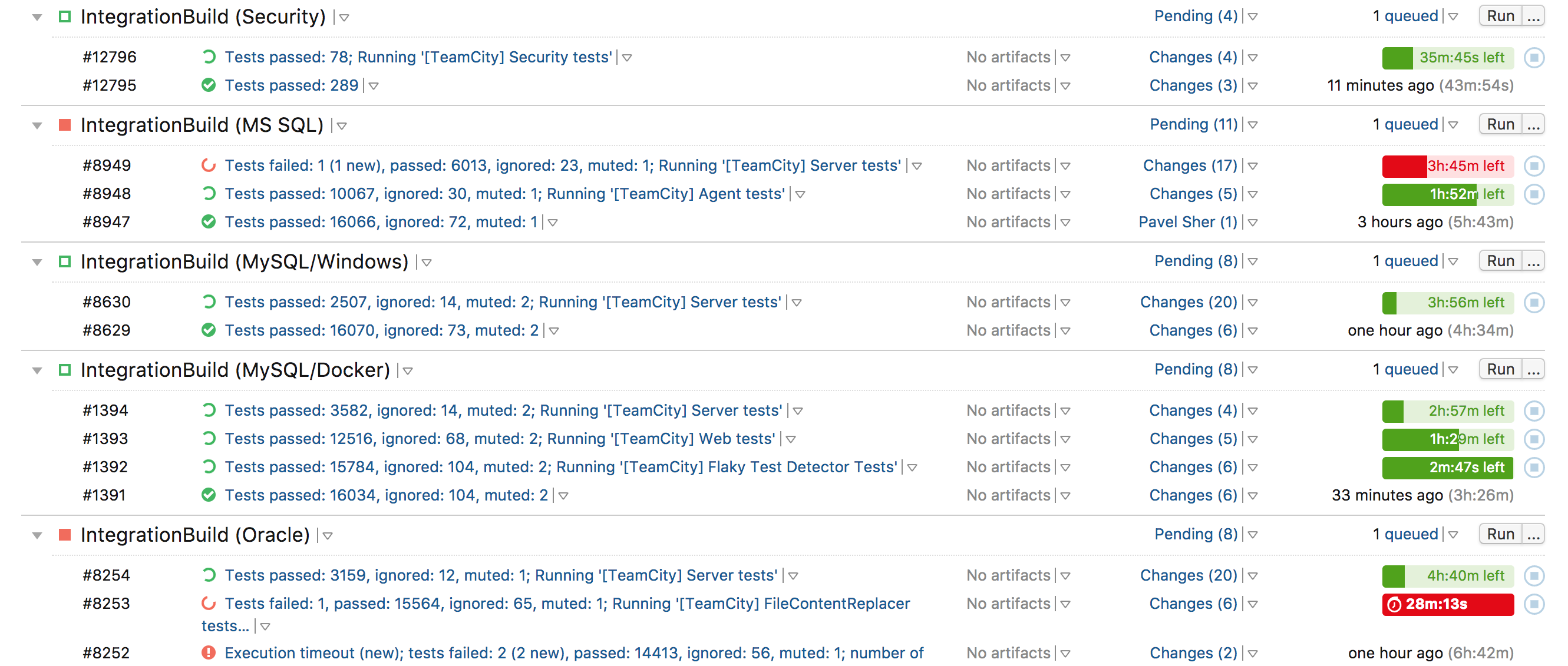

In Vite, HMR is performed over native ESM.
TEAMCITY PLUGIN UPDATE
This greatly improves DX - however, in practice we've found that even HMR update speed deteriorates significantly as the size of the application grows. This is why some bundlers support Hot Module Replacement (HMR): allowing a module to "hot replace" itself without affecting the rest of the page. Reconstructing the bundle can be expensive, and reloading the page blows away the current state of the application. In some bundlers, the dev server runs the bundling in memory so that it only needs to invalidate part of its module graph when a file changes, but it still needs to re-construct the entire bundle and reload the web page.

When a file is edited in a bundler-based build setup, it is inefficient to rebuild the whole bundle for obvious reasons: the update speed will degrade linearly with the size of the app. (code split point) HTTP request Slow Updates # route route module module module module.
TEAMCITY PLUGIN CODE
Code behind conditional dynamic imports is only processed if actually used on the current screen. This is essentially letting the browser take over part of the job of a bundler: Vite only needs to transform and serve source code on demand, as the browser requests it. Also, not all source code needs to be loaded at the same time (e.g. JSX, CSS or Vue/Svelte components), and will be edited very often. Source code often contains non-plain JavaScript that needs transforming (e.g. esbuild is written in Go and pre-bundles dependencies 10-100x faster than JavaScript-based bundlers. Vite pre-bundles dependencies using esbuild. Dependencies may also be shipped in various module formats (e.g. component libraries with hundreds of modules) are also quite expensive to process. Vite improves the dev server start time by first dividing the modules in an application into two categories: dependencies and source code.ĭependencies are mostly plain JavaScript that do not change often during development. When cold-starting the dev server, a bundler-based build setup has to eagerly crawl and build your entire application before it can be served. Vite aims to address these issues by leveraging new advancements in the ecosystem: the availability of native ES modules in the browser, and the rise of JavaScript tools written in compile-to-native languages. The slow feedback loop can greatly affect developers' productivity and happiness. We are starting to hit a performance bottleneck for JavaScript based tooling: it can often take an unreasonably long wait (sometimes up to minutes!) to spin up a dev server, and even with Hot Module Replacement (HMR), file edits can take a couple of seconds to be reflected in the browser. It is not uncommon for large scale projects to contain thousands of modules. However, as we build more and more ambitious applications, the amount of JavaScript we are dealing with is also increasing dramatically. Over time we have seen tools like webpack, Rollup and Parcel, which greatly improved the development experience for frontend developers. This is why we are all familiar with the concept of "bundling": using tools that crawl, process and concatenate our source modules into files that can run in the browser. Before ES modules were available in browsers, developers had no native mechanism for authoring JavaScript in a modularized fashion.


 0 kommentar(er)
0 kommentar(er)
